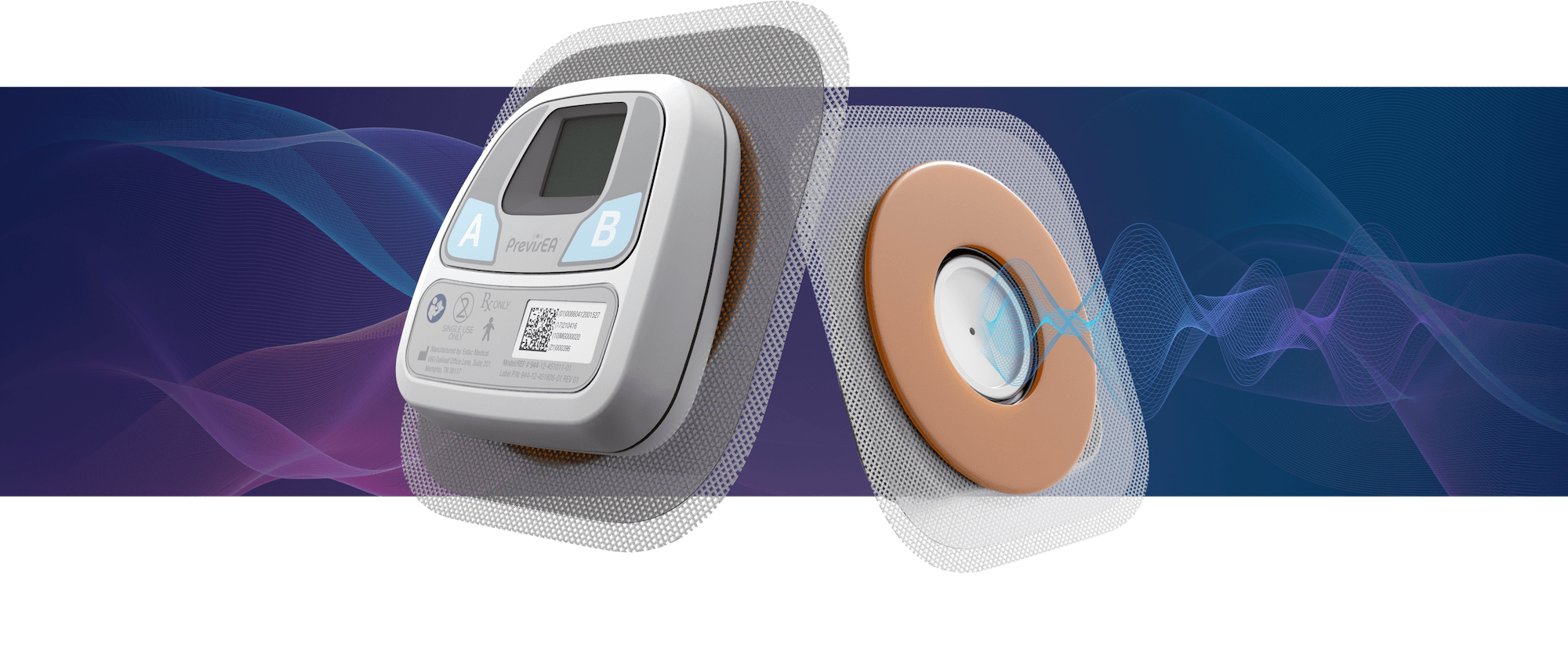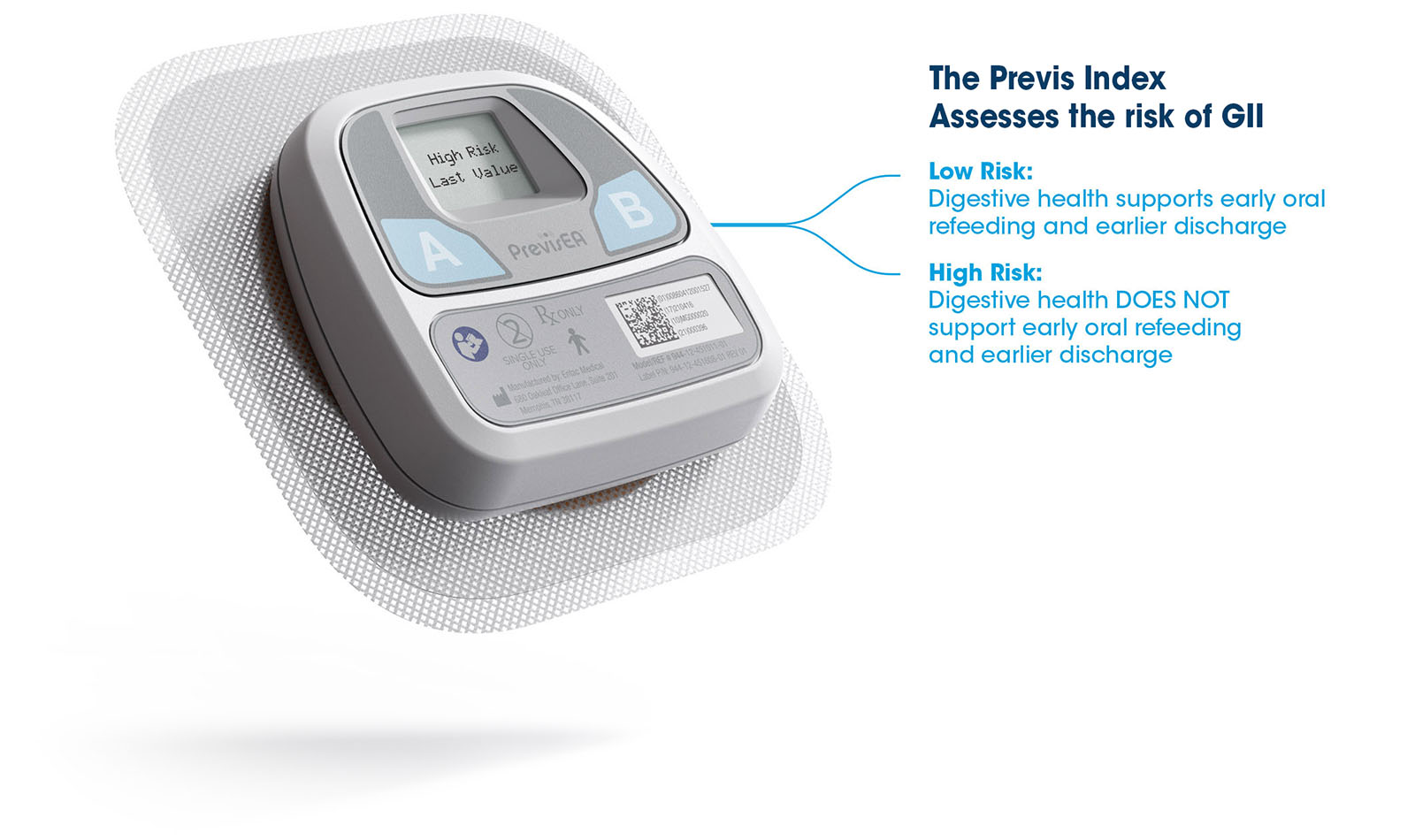

PrevisEA™ is a noninvasive, easy-to-use device that analyzes intestinal sounds for a validated acoustic biomarker of digestive health which is displayed as the Previs™ Index.1 The device is placed on the patient’s abdomen within one hour of surgery completion. At postoperative hour 12, the Previs Index displays “High Risk” or “Low Risk”. “High Risk” indicates that digestive health is likely insufficient to support early oral refeeding and the patient is likely to develop gastrointestinal impairment (GII) mostly commonly associated with postoperative ileus or less frequently due other causes.2 “Low Risk” indicates that digestive health can likely support early oral refeeding without subsequent GII. In PrevisEA clinical trials, GII was defined as vomiting, need for nasogastric tube insertion or a physician-ordered reversal of diet greater than 24 hours after completion of surgery.

PrevisEA™ is applied to any quadrant of the abdomen within one hour of the completion of surgery.
Once activated, PrevisEA listens for a validated acoustic biomarker.
The Previs™ Index determines if digestive health is sufficient to support early oral refeeding and early discharge or is at risk for GII.
PrevisEA analyzes intestinal sounds for a validated acoustic biomarker of digestive health which is displayed as the Previs™ Index. This biomarker reflects whether the patient is at risk for GII. This assists in optimizing length of stay and may avoid unnecessary readmissions.
PrevisEA uses a proprietary proprietary algorithm to detect and quantify a validated acoustic biomarker to assess the digestive health of patients. The result of this algorithm at postoperative hour 12 is the patient’s Previs Index. The Previs Index is compared to a predetermined threshold to determine if the patient’s postoperative digestive health puts them at risk for developing gastrointestinal impairment, 2–7 days after surgery.

PrevisEA helps determine if the patient can successfully be re-fed on the day of surgery
PrevisEA helps determine when the patient successfully be discharged
Determines individual patient risk of GII
Risk-based standardization of re-feeding and discharge strategies using precision medicine, which may: